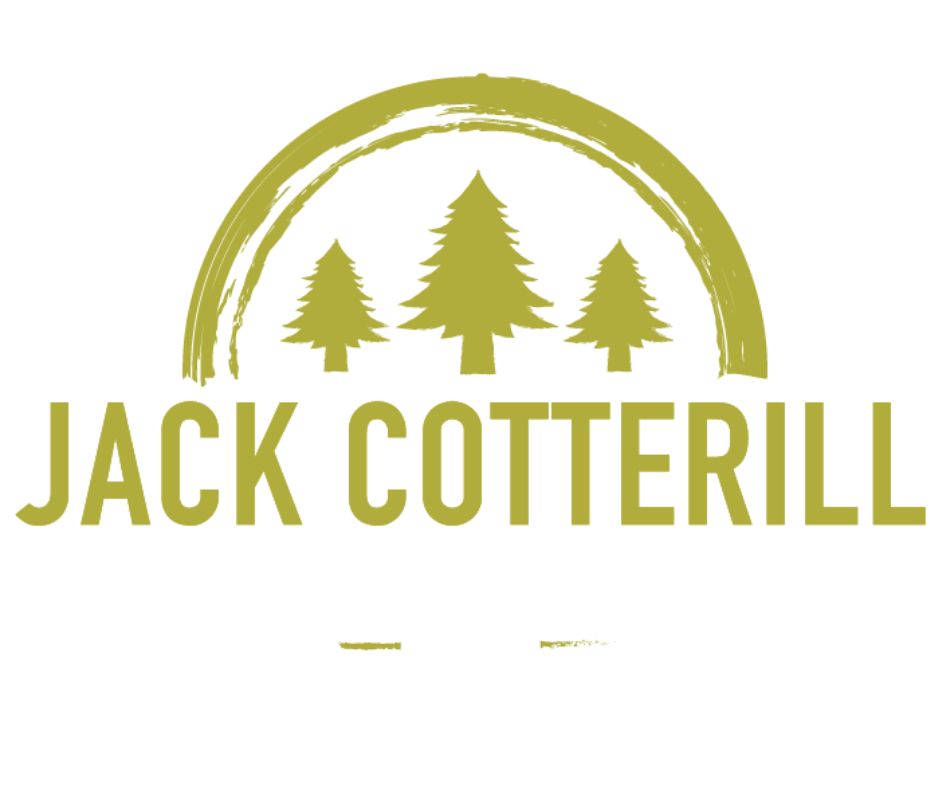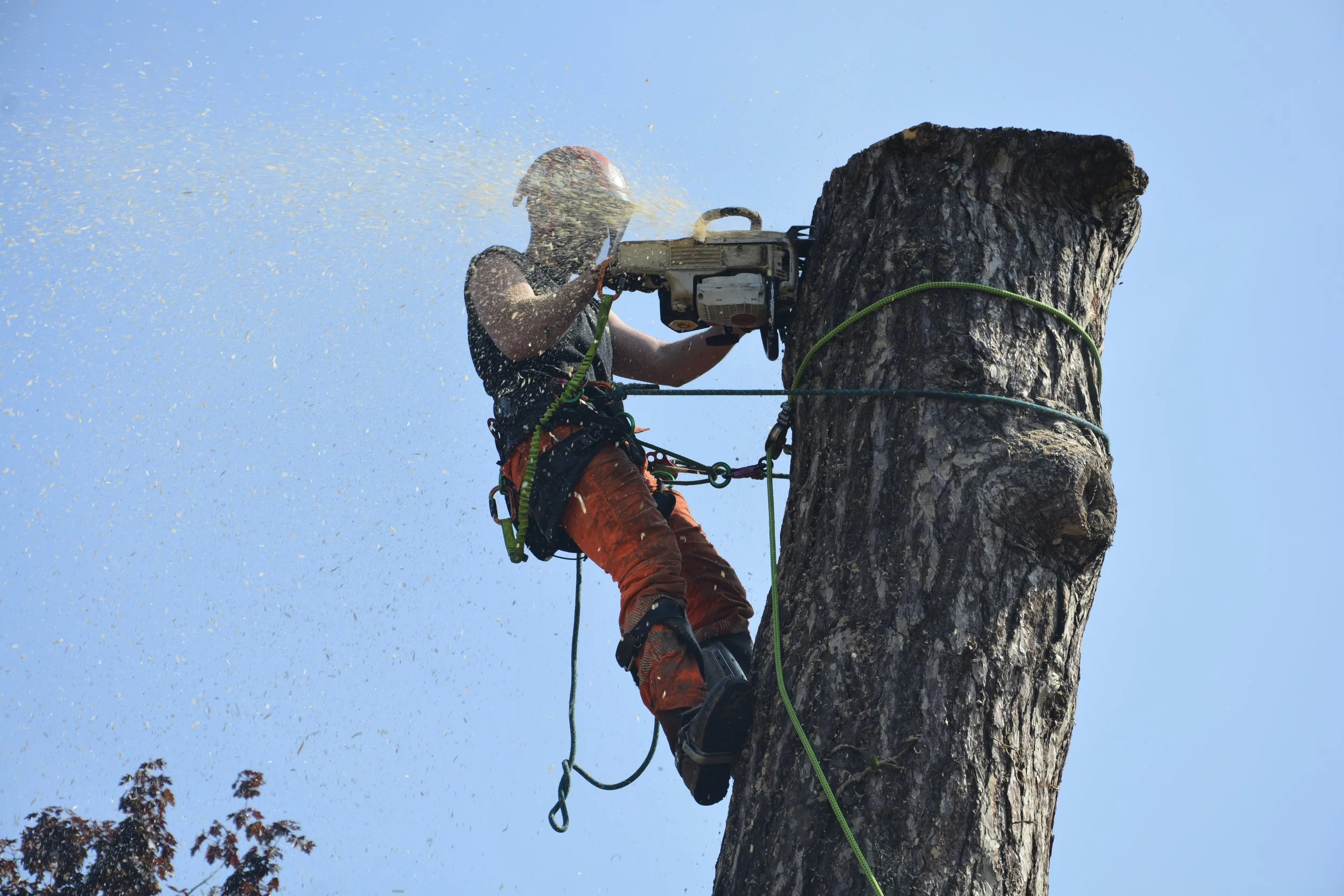The Dangers of Working as a Tree Surgeon
Jack Cotterill Tree Services aims to shine a spotlight not only on our own team of unsung heroes in the tree surgery industry but also to raise public awareness about the industry as a whole. Just as Jeremy Clarkson brings attention to the challenges faced by farmers, we want to highlight the incredible work performed by tree surgery businesses. This industry provides an invaluable service, often under dangerous conditions, and it's time to acknowledge the hard work and dedication of all involved.
What is Tree Surgery
Tree surgery, or arboriculture, is a profession that blends science and art, requiring a deep understanding of tree biology, intricate climbing skills, and the ability to use powerful tools. In the UK, tree surgeons play an essential role in maintaining urban and rural landscapes, ensuring the health of trees, and safeguarding public spaces from potential hazards posed by unstable or diseased trees.
Despite its importance, tree surgery is one of the most dangerous occupations in the country.
This article delves into the myriad dangers faced by tree surgeons and the measures taken to mitigate them.
Working at Heights
One of the most apparent dangers of tree surgery is the necessity to work at significant heights. Tree surgeons often climb trees that can be as tall as 100 feet or more.
They use ropes, harnesses, and climbing spikes to ascend and manoeuvre within the tree canopy. The risk of falling is ever-present, and even a minor misstep can lead to severe injury or death.
According to the Health and Safety Executive (HSE), falls from height remain one of the leading causes of fatal injuries in the UK workplace, and tree surgery is no exception.
Despite stringent safety protocols, the inherent instability of trees, especially those that are dead or diseased, exacerbates the risk. Branches can give way without warning, and the lack of stable footing adds to the peril.
Handling Dangerous Equipment
Tree surgery involves the use of powerful and potentially deadly tools. Chainsaws, woodchippers, stump grinders, and pole saws are standard equipment for tree surgeons. Chainsaws, in particular, are responsible for a significant number of injuries in the field.
These tools can cause deep lacerations, amputations, and even fatalities if not handled correctly.
Training in the use of this equipment is rigorous, but the combination of high-stress situations, physical exertion, and environmental challenges increases the likelihood of accidents.
Woodchippers, while essential for breaking down branches and tree trunks, pose a severe risk of entanglement and crushing injuries. Stump grinders, with their powerful rotating blades, can cause significant harm if used improperly.
Unpredictable Tree Behaviour
Trees are living organisms with unpredictable structural weaknesses. Diseased, dead, or storm-damaged trees can behave unpredictably when being cut. Branches might break unexpectedly, and trunks can split or fall in unintended directions.
This unpredictability requires tree surgeons to be constantly vigilant and to have a thorough understanding of tree physics and biology.
Moreover, environmental factors such as wind, rain, and even the weight distribution of the tree can influence how a tree reacts to cutting.
Experienced tree surgeons must make precise calculations and judgments to avoid accidents, but even the most skilled professionals cannot predict every outcome.
Physical Demands and Fatigue
The physical demands of tree surgery are immense. Tree surgeons must be in peak physical condition to handle the strenuous nature of climbing, cutting, and hauling tree debris. This physical exertion can lead to fatigue, which in turn can reduce a worker’s alertness and reaction time, increasing the likelihood of accidents.
Muscle strains, back injuries, and repetitive strain injuries are common in this profession. The act of climbing trees requires significant upper body strength and endurance, and the use of heavy tools can strain muscles and joints. Long hours, often under physically taxing conditions, contribute to the overall risk.
Exposure to Chemicals and Wildlife
Tree surgeons may also be exposed to hazardous chemicals used in pest control and tree treatment. These chemicals can cause respiratory issues, skin irritations, and other health problems if not handled properly. Proper protective gear and training are essential to mitigate these risks, but accidental exposure remains a possibility.
Additionally, tree surgeons often encounter wildlife such as bees, wasps, birds, & small mammals. These encounters can lead to bites, stings, and other injuries. In some cases, tree surgeons might need to deal with nests or hives, adding another layer of risk to their work.
Noise and Vibration Hazards
The tools used in tree surgery, such as chainsaws and stump grinders, produce significant noise and vibration.
Prolonged exposure to high noise levels can lead to hearing loss, while continuous vibration can cause conditions such as Hand-Arm Vibration Syndrome (HAVS), also known as vibration white finger.
These health issues can have long-term consequences for tree surgeons, affecting their ability to work and their quality of life.
Mental Stress and Pressure
The high-risk nature of tree surgery contributes to considerable mental stress. Tree surgeons must make critical decisions quickly, often in life-threatening situations. The responsibility for ensuring their own safety, as well as the safety of their colleagues and the public, can be mentally taxing.
The pressure to complete jobs efficiently, particularly during emergency situations such as storm damage, adds to the stress. Tree surgeons must balance the need for speed with the imperative of safety, a challenging task that can lead to mental fatigue and stress-related health issues.
Emergency Response and First Aid
Tree surgeons often work in remote locations where immediate medical assistance may not be available. In the event of an accident, the ability to perform first aid can mean the difference between life and death.
Training in first aid and emergency response is therefore a critical component of a tree surgeon’s education. However, the nature of the injuries that can occur, such as severe lacerations, fractures, and head injuries, often requires rapid professional medical intervention, which may not always be readily accessible.
Statistics on the Dangers of Tree Surgery
The Health and Safety Executive (HSE) provides valuable insights into the dangers faced by tree surgeons. The data consistently shows that the forestry and arboriculture sectors have some of the highest rates of workplace injuries and fatalities in the UK. According to HSE reports, falls from height, being struck by falling objects, and machinery accidents are among the leading causes of injury in this field.
The statistics highlight the importance of stringent safety measures and continuous training. Despite these efforts, the profession remains perilous due to the unpredictable and physically demanding nature of the work.
How dangerous is Tree Surgery?
We won't delve into comparing Tree Surgeons with other industries because such comparisons can be subjective, and we respect all trades and industries. However, it's important to note that Tree Surgeons often appear on lists of dangerous occupations, alongside professions like Commercial Fishing, Construction, Agriculture, Police, and Firefighting. While some of these jobs are widely recognized as hazardous, the risks faced by Tree Surgeons often go unnoticed. We aim to raise awareness and highlight the dangers inherent in this profession.
Training and Safety Measures
To mitigate the dangers associated with tree surgery, comprehensive training and adherence to safety protocols are essential. Tree surgeons undergo rigorous training in various areas, including:
Learning to climb safely using ropes, harnesses, and other equipment (Climbing Techniques).
Proper use and maintenance of chainsaws, woodchippers, and other machinery. (Tool Operation).
Identifying and mitigating potential hazards in the work environment (Risk Assessments).
Basic and advanced first aid training to handle injuries until professional medical help arrives (First Aid).
Protocols for responding to accidents and emergencies effectively (Emergency Procedures).
In addition to initial training, continuous education is crucial. Tree surgeons must stay updated on the latest safety practices, equipment advancements, and industry regulations. Regular safety drills and refresher courses help maintain a high level of preparedness and awareness.
Personal Protective Equipment (PPE)
Personal protective equipment (PPE) is a vital component of a tree surgeon’s safety gear. Standard PPE for tree surgeons include:
Helmets - To protect against head injuries from falling branches or impacts.
Eye Protection - Goggles or face shields to guard against debris and wood chips.
Hearing Protection - Earplugs or earmuffs to protect against noise-induced hearing loss.
Cut-Resistant Clothing - Chainsaw-resistant trousers and jackets to reduce the risk of lacerations.
Gloves - To protect hands from cuts, abrasions, and chemical exposure.
Boots - Sturdy, steel-toed boots for foot protection and stability.
Technological Advancements and Safety Innovations
Technological advancements and safety innovations continue to improve the working conditions for tree surgeons. For example, modern climbing gear, such as improved harnesses and rope systems, enhances safety and comfort. Chainsaw technology has also advanced, with features like automatic chain brakes and anti-vibration systems reducing the risk of accidents and long-term health issues.
Drones are increasingly being used for tree inspections, allowing tree surgeons to assess the condition of trees and identify potential hazards from the ground. This technology reduces the need for unnecessary climbs and provides valuable data for planning safe and efficient tree work.
The Role of Employers in Ensuring Safety
Employers play a crucial role in ensuring the safety of tree surgeons. They are responsible for providing adequate training, maintaining equipment, and enforcing safety protocols. Regular safety audits and risk assessments are essential to identify potential hazards and implement corrective measures.
Employers must also foster a safety-first culture, encouraging open communication about safety concerns and promoting a proactive approach to risk management. Providing mental health support and ensuring reasonable work hours can help address the stress and fatigue associated with the profession.
The Importance of Public Awareness
Public awareness of the dangers faced by tree surgeons is also important. By understanding the risks involved, property owners and the public can appreciate the expertise and caution required for tree work. This awareness can lead to more informed decisions when hiring tree surgeons and greater respect for the safety measures they implement.
For example, property owners should be informed about the importance of allowing tree surgeons to set up safety zones and barriers to protect themselves and others from falling debris. They should also understand the need for adequate time and resources to complete tree work safely, rather than prioritising speed or cost savings.
Conclusion
Tree surgery is a vital yet perilous profession in the UK, fraught with numerous dangers ranging from falls and machinery accidents to unpredictable tree behaviour and adverse weather conditions. The physical and mental demands of the job, combined with the need for extensive training and strict adherence to safety protocols, make it one of the most challenging occupations.
Despite the inherent risks, tree surgeons play an indispensable role in maintaining the health and safety of our landscapes. By continuing to improve safety measures, embracing technological advancements, and fostering a culture of safety, the industry can help protect these skilled professionals as they perform their essential work. Public awareness and appreciation of the dangers faced by tree surgeons can further support efforts to ensure their safety and well-being.
Thank You
Join us by sharing this article and shout out a massive “thank-you” to all tree surgeons for all their hard work, enduring bad weather during emergency work and risking their lives, physical and mental health in providing this essential service to the public and commercial clients.









